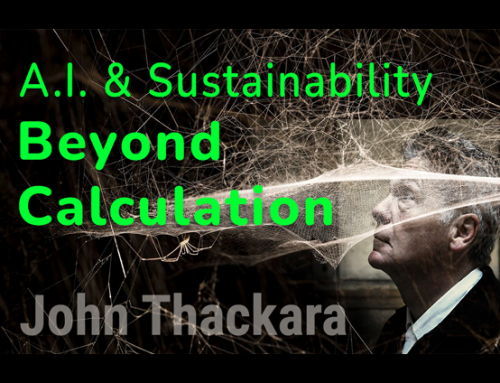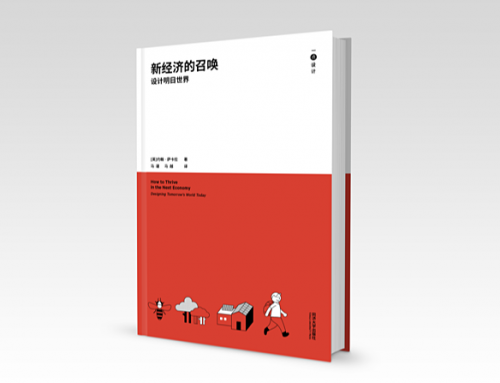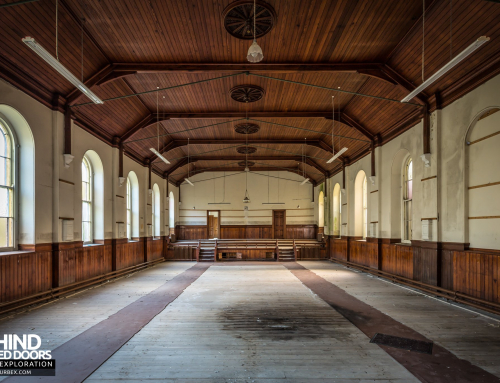Writing from India, where he encounters designers, digerati and Bollywood producers who want to put him in a movie, John Thackara considers the potentially thrilling future of IT in the subcontinent.
To Bangalore, India’s IT city, to speak at the first India Design Summit. The event is organized jointly by the National Institute of Design (NID) and the Confederation of Indian Industry (CII).
Business leaders here anticipate keen competition from China, in markets ranging from textiles to software, now that the World Trade Organization (WTO) has further opened up Asian and global markets; they are looking for new ways to innovate higher-value products and services. NID’s new Director, Darlie Koshy, persuaded CII to stage the summit as a signal that design will be one of those ways.
Koshy’s timing strikes me as excellent in two respects. First, India’s manufacturers and software industries are preparing to move up the value chain of the world economy, and they seem to have decided that design can help them do that. Secondly, NID graduates possess a unique combination of social responsibility – and entrepreneurial zeal – that are perfectly suited for these New Times.
For its part, the CII, too, is in the middle of a generation shift. Its new vice-president, Ashok Soota, is president of Mind Tree Consulting, one of India’s software powerhouses; Soota is a keen supporter of design as an alternative to what he described as the ‘LCP Raj’ – the stifling decades after independence in which Indian industry laboured under a regime of Licenses, Controls and Permits.
The Design Summit summit had a somewhat ceremonial flavour, with lots of senior people saying rather general things; but the CII will now set up a design working party to work out how best to turn this abundant goodwill into projects.
The day I arrive, a report by Forrester Research predicts that within five years the proportion of spending on offshore services in global IT budgets will rise from 12 to 28 per cent of total expenditure. As I comment at the conference, only America could describe a subcontinent with one billion people as part of an ‘offshore’ industry. But nobody seems to share my indignation.
People I meet are more engaged by a discussion of the different ways design can help them develop new kinds of services, supported by IT. My own talk is about the move away from tech-driven innovation towards a new model which I nickname ‘the re-engineering of daily life’.
Sir Christopher Frayling, chairman of the UK Design Council, made a well-received speech about design as one of the ‘creative industries’ that the British government (and, to my horror, the Dutch minister of culture), favours right now.
Personally speaking, I can’t stand the ‘creative industries’ concept: the words conjur up ghastly images of a world filled with advertising executives and rich design consultants. Creative industries thinking is redolent of a point-to-mass mind-set that may have worked in the new economy – but won’t wash in these New Times. The good news is that I have the strong impression that the follower generation, certainly in India, shares my distaste for the creative industries concept.
December 2nd
After the Design Summit Jogi (Panghaal, Director of Doors in India) and I visit the new campus of Bangalore’s National Institute of Fashion Technology (NIFT). Bangalore NIFT is the latest in a nationwide network of seven educational and research institutions first established in the 1990s. (NID’s new director, Darlie Koshy, was previously at NIFT). NIFT’s Director in Bangalore, Hema Maya, and her senior academic, G. Somasundaram, a professor in fashion management studies, tell me that their task is to deliver the designers and managers (600 graduates each year) and business strategies needed to expand India’s share of the global textile and apparel market from one to at least five (and preferably ten) per cent by 2010. NIFT is such a buzzy and focussed institution that I’m sure they will succeed.
Another new design institute in Bangalore, Srishti, has been set up by Geetha Narayan and Poonam Buir Kastur. When I arrive there, Jogi is running a workshop about the mapping of communications in a network of nine villages somewhere in the countryside nearby.
Our next stop is Infosys where Sridhar Dhulipalar has aranged for me to give a talk. The Infosys campus is more like a small city state than a company. Within our first minutes on campus we bump into a crowded national delegation from New Zealand, led by its IT minister, and another group from AT+T, apparently including its chairman. The Doors of Perception delegation is more modest in size – namely, the two of us – but we’ve nabbed the lecture theatre first so the other guys don’t get to grandstand like we do.
Infosys City, as it’s called, is an enormous site: 28 buildings cluster among ponds, fountains, lawns and and shrubs. There are Food Courts, conference centres, and a huge gym. Mind you the latter, although filled with brand-new machines, is empty: I presume everyone is working. The only unsure touch is an expensive high-tech ‘presentation suite’ in the main corporate building where you are shut in a darkened room and subjected to a ghastly audio visual show about the digitally-enhanced lives of Indian yuppies. Speaking personally, I was a hundred times more impressed chatting to Infosys staff after my talk than by this automated sub-themepark experience. Infosys should chuck out the tech and replace it with a tearoom.
After Infosys we head for the Indian Institute of Information Technology (IIIT). This élite postgraduate facility hosts 122 hand-picked students in an expensive, if rather hideous, building paid for by Singaporean investors. Our host – IIT’s director, Professor Sadagopan, who had been a speaker at the Design Summit – is besieged by two separate Chinese delegations and by phone calls from the the Chief Minister. So we don’t stay long.
Singapore is spearheading the development of an ‘IT Forum’ to coordinate strategy among an Asian belt of IT cities including Bangalore and Hyderabad in India, Shanghai, Tokyo, Hong Kong and Singapore. David Lim, Singapore’s IT minister, reckons there is complementarity in this ‘infocommunications ecosystem’ between China’s manufacturing base, India as a software powerhouse, Korea’s bandwidth capacity, Japan’s global leadership in wireless services, and Singapore as a test-bed for new services and business models. Pan-Asian rhetoric like this is persuasive, but I’m not convinced much will come of it. Most IT alliance action nowadays is company-to-company (B2B) not state-to-state (S2S).
December 3RD
Our next stop is General Electric’s equally lavish new campus, the Jack T. Welch Research Centre, which has just opened in another outskirt of Bangalore. The campus has been designed and built at amazing speed. Its Bangalore-based architect, Naresh Navasimhan, shows us round. Eleven hundred researchers are already busy in eleven labs developing polymers and synthetics, modelling new chemicals, engineering smart ceramics and metallurgy, and so on. Nearly everone here, we are told, has at least a masters degree or a PhD.
I’m reassured to see plenty of people in white coats putting powders into glass pipettes – and not just rows of young guys staring into computers. The team here evidently works together well; the duration of research projects has been reduced sharply by cutting the steps in GE’s standard process from 24 to seven. Research costs, as a result, have plummeted from an average of $2million per project to $200,000. Small wonder that GE has decided to enlarge the facility to 3,000 researchers as fast as possible (or that the company’s US-based researchers are anxious about their futures). Several thousand construction workers are hammerng away putting up a new group of buildings.
Welch-ville is impressive as an example of global-scale research production. But although the facility is brand new, the atmosphere feels resolutely Old Times. A vast sign over the food court exhorts us to ‘Welcome GE’s New CEO, Jack Immelt’. I learn that the (new) Great White Chief did not, in the event, show up in person, but manifested himself by telepresence instead. Inside the facility, otherwise bare walls sport policy exhortations in ghastly typography. A traffic sign at the entrance reminds visitors that the speed limit is not ten, and not 15, but 16 kph; 10 miles an hour is GE’s global on-site traffic standard. The acres of lawn with rows of powerful water sprinklers, full-on during the hottest part of the day, are also pretty shocking in a city which has a severe water shortage. I don’t imagine this will endear GE to environmentalists, but neither do I imagine they will care too much.
Back in the city I meet 40 designers and architects at an informal get-together organized by Jacob Matthew, an organiser, in his private time, of Bangalore’s Designers Friday network. Matthew’s 28-strong company, Tessaract, consults for big retailers, manufactures furniture, and runs an interesting design shop. Along with most of the professionals I meet, Tessaract seems to be doing pretty well – so the evening was hardly fertile ground for my talk about the need for design to re-invent itself. But once again I am struck by an openness to new ideas and the intelligent way designers and architects here plot their course.
December 4TH
For me, the major story in India is the potential for the design of services by, and with, rural and urban poor people. This is not about aid, but about a truly vast, un-met market that myopic TelCos, all of whom seem to be mesmerised by high-cost, high-bandwidth business networks, seem unable to focus on.
M. S. Banga, chairman of Hindustan Lever, pointed out in a press interview during my visit that India’s software industry has impacted less than 500,000 people among a one billion-strong population – but that more than 700 million people work in agriculture (living in roughly 700,000 villages). If the income of these people were to rise by a modest three per cent a year, overall GDP in India would grow by 1.7 per cent a year. And the country would also benefit from a reduced rate of urbanization. Mumbai (Bombay), I learn, is growing by 160,000 people a week – whereas the last time I was here the number was 60,000.
Connectivity is no longer the main obstacle to wealth creation via communication services. On my last but one day, an impressive programme to bridge the digital divide is announced. Under Plan 9000, Pace, a Hyderabad-based computer training company, will launch 3,000 self-sustaining computer centres in Andra Pradesh and 6,000 in the rest of the country. Each will be staffed by three computer science graduates who will be helped to procure equipment such as computers, scanners and software. Each centre, which will have cable internet access, will service 15,000 people – about 100 million in total.
As with the Public Call office (PCO) innovation of the 1990s, a combination of new technology and new business models is making serious inroads into the digital divide in India.
The crucial step is to accelerate the design of new services to take example of this more broadly available connectivity. At the Centre for Knowledge Societies(CKS) in Bangalore, Aditya Dev Sood’s team documents developmental ICT projects throughout South Asia. The Bangalore-Hyderabad area is probably the only region in the world where global-quality high-tech and Bible-age lifestyles co-exist, and I’m sure Sood is correct to argue that test projects done here can stimulate service innovation throughout South Asia and the African subcontinent too.
CKS and Doors have agreed to search for ways to support service design innovation in different rural and urban contexts. CKS is looking to expand its project documentation activity, while Doors will support pilot projects that involve collaborative mapping of communication flows, and the design of service scenarios, in diferent situations.
Institutes such as NID, where Professor M P Ranjan has pioneered scenario design techniques for several years, have started to train designers about the use of design scenarios for this kind of work, so plenty of qualified people are available once the projects get underway.
Bangalore operates at multiple speeds. GE’s huge research centre seems to have been built in less time than it takes to order a beer at the Bangalore Gold Club, where I am staying. Bangalore is less frantic than Mumbai, or even Ahmedabad, where we did our first Doors event in India last year. One reason for a certain tranquility is that the city contains several large parks. These are are owned and occupied by India’s army and airforce. India’s nearest external enemy, Pakistan, is thousands of kilometres to the north – but the British, who liked the climate here, turned sleepy little Bangalore into a a garrison city during the nineteenth century and India’s military never left. I saw hardly any troops or military vehicles, but their city-centre grounds are so extensive that there could be many divisions of them hidden away.
Speaking of the military, an article by Anuradah Chenoy in the Asian Age (30 November 2001) enlightened me more about the Afghanistan situation in 500 words than all the western media coverage I’d seen since 9/11. Chenoy’s ripping yarn includes these gems: By 2050, Central Asia is to account for 80 per cent of US oil and gas. The Taliban leadership was invited to Houston in 1997 and promised $100 million a year in transit fees when the Bakhu-Tblisi-Ceyhan pipeline is built. Vice-prez Cheney was previously president, CEO, and a major stockholder in Haliburton, a leading energy services group. Bush Senior is a member of the $12 billion Carlyle Group whose private equity investors have included … the Bin Laden family. Bush Senior is said to have met the Bin Laden family twice. Gripping stuff.
Only four million mobile phones have been sold in the whole of India, but everyone seems to have one here. People mostly use pre-paid cards, and a price war is raging between local TelCos and international networks such as Orange. There are signs everywhere for “MOTS” (Mobile On The Spot).
The tempo of business is determined by the use of mobiles: Jogi and I make appointments a few hours in advance; call from taxis or auto-rickshaws to say we are arriving; and a couple of times, people call minutes after we leave a meeting to confirm the points we just agreed.
Speaking of mobiles, Nirmal Sethia, a management professor from California, reflects at the design summit on the “lost 20 minutes” of his students. This is the amount of time they spend packing up their papers (and Palms) at the end of one lecture and walking across campus to the next one. “Five years ago, they would either chat to each other, or possibly walk alone reflecting – as I fantasized about it, at least – on what they just heard,” says Sethia. “Nowadays, most of them are talking on their mobile before they are even out of the lecture hall. I speculate not only about what they’re talking about – but also about what they are now missing from college life.”
December 5TH
En route back from Bangalore to Europe, I have one more day in Mumbai. Ravi Pooviah, a communication design professor at the Indian Institute of Technology in Bombay, has organized a four-day conferece on interaction design at the Indian Institute of Technology and invites me to give a talk. Another group of very smart students and researchers. By now its 37 degrees, and I’m beginning to flag, but it’s tremendous fun to be there.
Since I last visited the Mumbai/Bombay IIT in 1994, a row of bizarre apartment blocks has been erected by the lake. Each one is at least 40 stories high and boasts either a Grecian temple, or some kind of Italianate cupola, on its top three floors. Las Vegas meets Milton Keynes – not the sort of thing they’d approve of back in Holland. During a break at the conference, I learn that the Mumbai/Bombay dot.com scene has been more badly hit than Bangalore’s larger software companies. If dot.com money paid for those blocks, they deserve it.
In Mumbai on my last evening, two young film producers approach me on the street and ask me if I want to be in a Bollywood movie. I say yes, of course – and then ask them what my role will be. Nobody mentions mentions the title, let alone the plot, of the movie. “You can choose between the police chief and the hotel manager,” they say. I say I’ll do the hotel manager, and ask when they start shooting. “Eight o’clock tomorrow morning.” Talk about just-in-time production. Sadly, I have a flight to catch – but just in case I’m throwing away a fortune, as well as a new career, I ask about the pay. “It’s 500 rupees before tax,” (about $10) they say. Five, perhaps less, after deductions. I tell them my agent will call them. Maybe.




